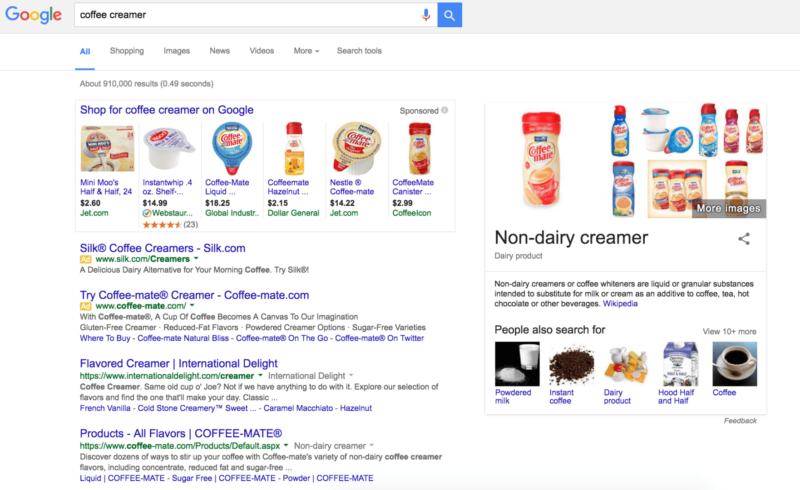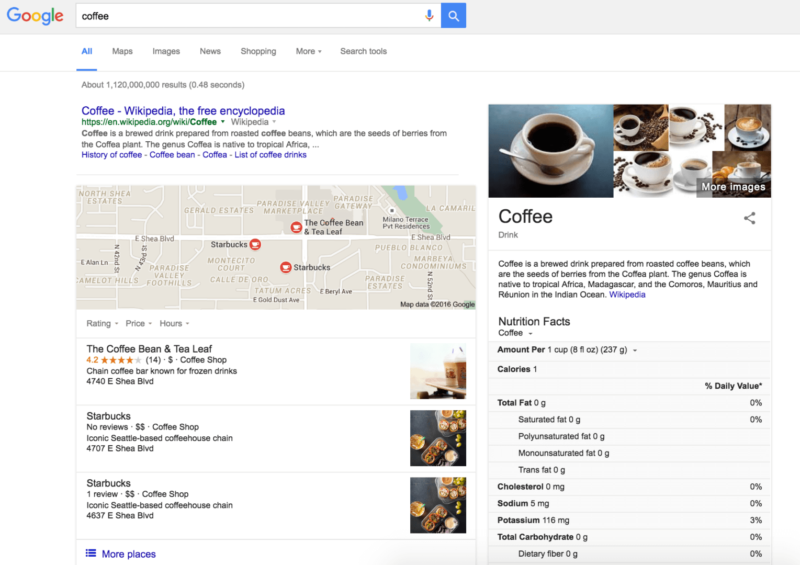Refine your content marketing tactics to benefit from enhanced search engine display
Columnist Thomas Stern discusses how content marketing performance can fall short if SERP features aren't considered.
Content marketing has become commonplace for marketers today. For those who need guidance, there are numerous handbooks and step-by-step resources that teach the best ways to understand who we’re marketing to and what their needs are.
Most content marketing guides can explain the principles of optimization, as well as the critical role that search engines play in generating content visibility. What the guides fail to address are the many features or types of search results that exist and how they impact the visibility of content that is produced.
These enhancements — special methods of display tailored to match the type of content being shown — encompass a wide range of SERP features, including:
- Knowledge Graph;
- local pack;
- reviews;
- site links; and
- Featured Snippets.
In this article, I’ll focus on Google and use Google-specific terminology, though Bing has unique methods of displaying information as well. Let’s explore the most effective ways Google enhances its search results and look at examples of keywords and content types that both generate and populate them.
Google Knowledge Graph
Google Knowledge Graph, one of the most prominent SERP features, appeared in more than one-third of searches in the last 30 days, according to Moz.
Knowledge Graph was originally introduced in 2012 to enhance Google’s search results by tailoring content display to user intent. Today, Knowledge Graph provides a detailed spectrum of information on nearly any topic. The tool serves to reduce the need for consecutive searches and resolve any queries, without the user having to navigate to other websites lower on the SERP.
Google’s recent removal of right-hand-side ads on desktop search resulted in content marketers recognizing Google Knowledge Graph as a tool to improve visibility, in addition to their typical SEO and SEM initiatives for targeted queries. For instance, a search for “coffee creamer” displays images of a popular non-dairy creamer in addition to the brand’s shopping ads and search ads.
Local pack, reviews and sitelinks
A more general search term like “coffee” removes context and pushes Google to reveal a wider spread of SERP features, including:
- Knowledge Graph of nutritional information sourced from the USDA;
- a local pack of nearby coffee shops with reviews; and
- a Wikipedia page with additional sitelinks.
In 2013, Google began analyzing search intent for each query when it rolled out its Hummingbird algorithm. Without additional keywords to help the search engine infer intent, the inclusion of the local pack provides context to the “coffee” query in case the user isn’t seeking health information or historical details about coffee.
The local pack features the top three nearby coffee shops. Though the two visible brands are both franchises closest to the ZOG Digital office, distance is not the only factor that potential customers are likely to consider — The Coffee Bean & Tea Leaf has 14 reviews with an aggregate rating of 4.2 stars, while both Starbucks locations combined have one review and no visible ratings.
Users who intend to find value in their searches rely on reviews to inform their actions.
If Google is able to infer a user’s intent, it will tailor its display of results with a spread of features designed to meet that user’s needs. A search for “best coffee” has a lot of value for brands aiming to reach consumers in the purchase consideration stages — brands not only need to invest in paid media like shopping ads and search ads, they also need to earn strong reviews. Conversely, a search term like “best coffee shop” prioritizes local quality and indicates the user’s desire to buy a prepared coffee drink rather than beans to brew at home. In this situation, reviews in the local pack have more value than distance, and the results shown include only the highest-rated nearby coffee shops.
For users seeking more information on coffee, the Wikipedia sitelinks that are visible in the above SERP direct visitors toward their specific need, while allowing them to skip a navigational step. As seen below, sitelinks are typically expanded to include a description for more brand-specific search terms like “Starbucks menu.”
Visible alongside the menu sitelinks is a carousel of menu categories and a link titled “More about Starbucks” that takes users to local Starbucks options. The categories expand to display a variety of menu options that users can access without leaving the SERP.
For restaurant brands, menu PDFs are difficult for search engines to crawl. Google prefers when pages have Schema coding, text cues that give search engines instructions for reading a page. Schema code specific to menu results must also be included on menu pages to populate a carousel, as shown above in the SERP.
As proven in Mediative’s latest SERP study, the top left-hand side of the SERP still has prominent visibility for the user despite mobile devices training a user’s search habits to scan results pages vertically, rather than horizontally. With increased competition for high-ranking search visibility, content marketers can optimize for results like these to earn visibility in other ways besides being the top organic listing.
Featured Snippets
Featured Snippets, as shown above, ensure that Starbucks has prominent content visibility among its competitors for search terms such as “brewing coffee at home.”
To accomplish this, Starbucks provides a blog post structured for readability and usability. It’s also structured its site so there’s prominent navigation for its “How To Brew” category of pages. The comprehensive 901-word article takes users step-by-step through four ways to brew coffee for a few different types of coffee makers. The segment that’s pulled for the SERP is for a common one — how to brew coffee from a coffee press.
Final thoughts
Google has enhanced its search engine to be more visual, informational and user-friendly. As a result, content marketers are presented with a unique challenge that requires new tactics.
With improved competition in the search space, content marketers cannot rely on classic SEO best practices to improve page visibility. Tools like SEMRush’s recently released Keyword Difficulty tool can be used to match which keywords have the potential to display with these enhanced SERP features, but optimizing for the enhanced results page in addition to improving search rankings requires more than identification. Optimizing results beyond the typical blue link results requires additional research and a comprehensive content marketing plan.
Contributing authors are invited to create content for Search Engine Land and are chosen for their expertise and contribution to the search community. Our contributors work under the oversight of the editorial staff and contributions are checked for quality and relevance to our readers. The opinions they express are their own.
Related stories



